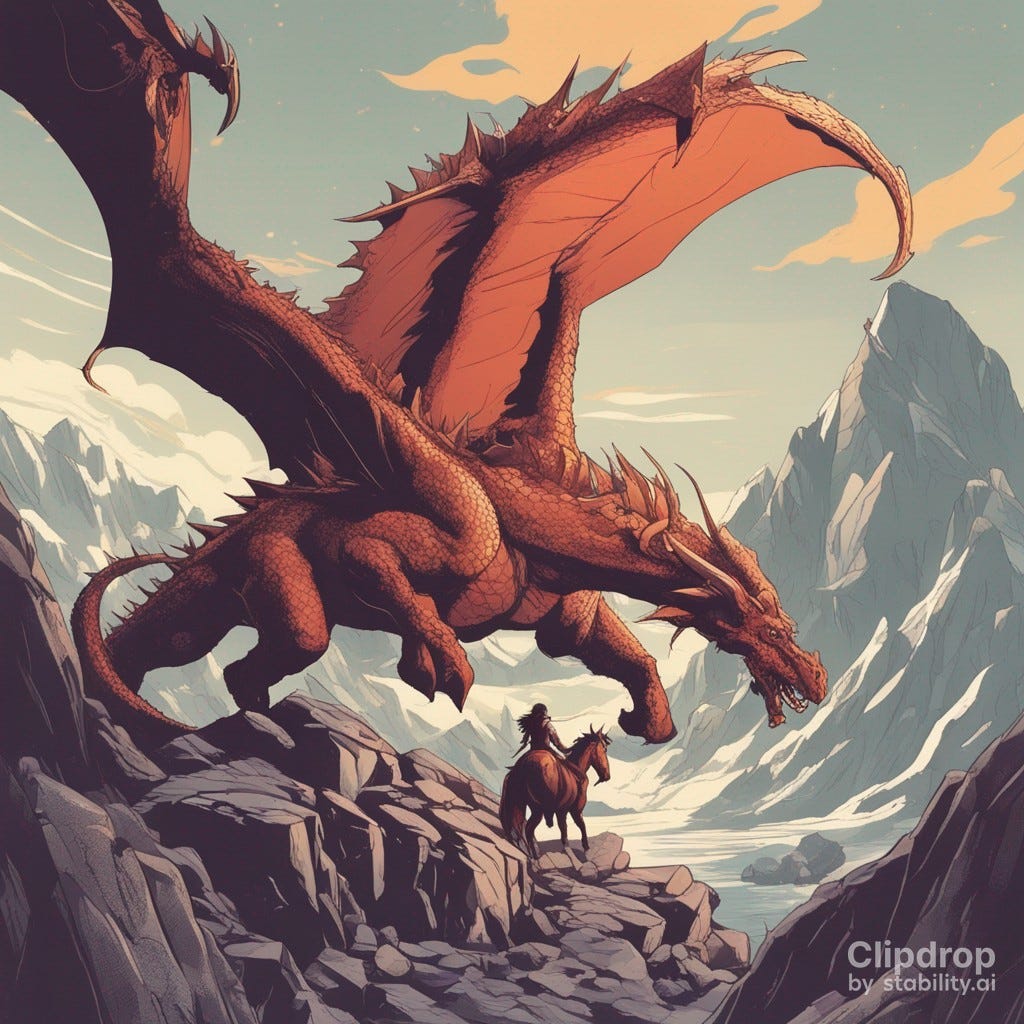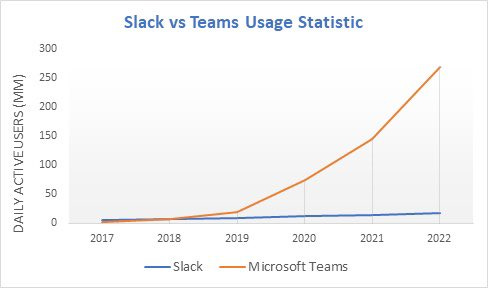Surprise, a dragon ate your pony.
Or how small products end up gobbled up by giant platforms.
Is anybody else a big fan of LOTR lore here?
There is a sad scene in The Hobbit (at least in the book, not sure it made it into the unnecessarily long movies, and I refuse to rewatch them just for that)
where the dragon Smaug chases and eats the ponies, with whom the main character Bilbo Baggins -and the readers- get emotionally attached for more than half the book (Daisy, Myrtle, Bungo, you’ll never be forgotten). 1
I can help but feel a little bit like that when I see one large platform launching a feature that suddenly threatens to push a small, lovable product off the market.
Yes, your product may be cool and all, and you may have a small crowd of users who feel your product is valuable. You may even be profitable. But you always run the risk of being gobbled up, if you’re not careful.
I can think of a couple of examples I witnessed myself:
Example #1: Employee Recognition App
About three years ago, I was VP of Global Talent at a tech company, and I had to make a decision about a product we used for employee recognition. In comparing alternatives, I discovered a rather obscure feature of MS Teams called Praise. The functionality was basic, but with a little bit of extra work, we were able to turn that into a tool suitable for our needs, and since it was already integrated into MS Teams, the implementation was super smooth.
(For those interested, I tell the full story in this article).
MS Teams, and now MS Viva Insights are poised to eat up a big chunk of the market of these apps, just by virtue of being a larger platform where employees have to go anyway. It’s like when you have a pharmacy inside your supermarket: it’s so convenient that there’s no incentive for going to a “standalone pharmacy“ anymore.
Example #2: Name Pronunciation App
A little over a year ago, I was informally advising a startup founder who had created a neat little app called SayMyName, which allows you to record the pronunciation of your name, so you could add it to your signature on Slack. If you think about it, it’s a very valuable addition for inclusion purposes, with our name being such a big part of our identity.
In our conversations, we discussed that she only had a small window of opportunity to make it into something relevant. Less than two months later, Slack released a native feature that allowed you to do exactly the same, making the app less valuable. Luckily, she confirmed in a recent conversation that she had already started to pivot to offer some additional functionality and to develop other integrations into MS Teams and Gmail, but it was a big blow to her that Slack decided to just copy the functionality without even a heads up.
Example #3: Team Collaboration App
Working as VP of HR for a technology company, our team was at some point enamored with Slack, and how much better it was as a communication tool that allowed remote teams to collaborate and automate functions. The demand for the tool was growing, and just then, MS Teams was launched. Being an Office365 reseller, we got this tool for free so we asked the team to give it a try. At first, it was “not as good as Slack“, but as the tool matured and improved, the team gradually realized that it could do most of what Slack did, for free, and in a fully integrated way with the rest of the tools. The demand went away, and not only our team learned to embrace MS Teams, but also Microsoft managed to build a moat and hold the fort, as you can see in the following graphic:
(taken from https://twitter.com/TrungTPhan/status/1640866391485194241)
But this is not just about smaller apps being replaced by features within large platforms. There are many more examples of this platform envelopment strategy (or, as I like to refer to it, “product phagocytosis”) threat.
Uber vs. Taxi Dispatch Apps:
Before the rise of ride-sharing apps, taxi dispatch apps like Hailo and MyTaxi offered a more convenient way to hail taxis and make payments. However, with the entry of Uber into the market, users could book rides, track drivers, and make payments seamlessly within a single app. The streamlined experience and extensive driver network of Uber quickly overshadowed the standalone taxi dispatch apps, leading to a decline in their usage and popularity.
YouTube vs. Vine: Short-form Video
Vine was a short-form video app that allowed users to create looping six-second videos. However, when Instagram (owned by Facebook) introduced video-sharing features and later expanded video lengths, and TikTok emerged as a major player, Vine faced immense competition. Users flocked to platforms that offered more versatile and longer video-sharing options, causing Vine's eventual shutdown.
Apple Maps vs. TomTom and Garmin: Navigation Devices
Before the advent of smartphone navigation apps, dedicated GPS devices from companies like TomTom and Garmin dominated the navigation market. However, with the launch of Apple Maps and Google Maps, users could now access navigation directly on their smartphones. The convenience of having built-in maps and real-time updates eliminated the need for separate navigation devices. Consequently, TomTom and Garmin experienced a significant decline in demand, leading to a shift in the navigation industry.
Instagram vs. Hyperlapse: Time-Lapse Videos
This is an example of self-eating: Hyperlapse, a standalone app developed by Instagram, allowed users to create stunning time-lapse videos with ease. While Hyperlapse initially gained popularity, its prospects changed when Instagram integrated the time-lapse feature directly into its main app. The integration provided users with a seamless experience and access to an extensive user base, making Hyperlapse redundant for many users. Another example of self-eating would be Google Photos replacing Google Picasa.
Evernote vs. Microsoft OneNote: Note-Taking and Organization
Evernote, a widely used note-taking and organization app, faced tough competition from Microsoft's OneNote. As part of Microsoft's suite of productivity tools, OneNote provided users with seamless integration with other Microsoft products, such as Office. This integration attracted users seeking a comprehensive solution for note-taking and organization, causing a decline in Evernote's market share and user base.
Gmail vs Calendly:
And this brings us to a more recent case of dragon attack:
Gmail’s recent launch of new features to allow sharing calendar availability and booking events, appears to threaten Calendly. There’s probably one thing that can somehow protect Calendly’s position: all the available integrations for multiple platforms, something that Gmail might not be able to replicate so easily, not without some risk to their own competing products.
But still, this is a small(er) pony that is trying to hold its ground against a big dragon. Hopefully, this time the pony will survive because Calendly is a neat app, with lots of features, and a generous free tier.
Wrapping it up
Your app may have cool features and may be loved by your users. But while you’re small and nimble, you’re always at risk of someone else gobbling you up. The best way to avoid that is to also be agile and strategic in building ways to expand and differentiate because stealth only works pre-launch, and the element of surprise is a very ephemeral advantage in these times of rapid change.
Eagle-eyed readers of Tolkien would note that in the book the ponies don’t get names, only in the movies. And also the protagonists understandably change mounts at different stops throughout the journey, so these may not even be the same ones that started the trip. But let’s call it a poetic license, and be done with it.






